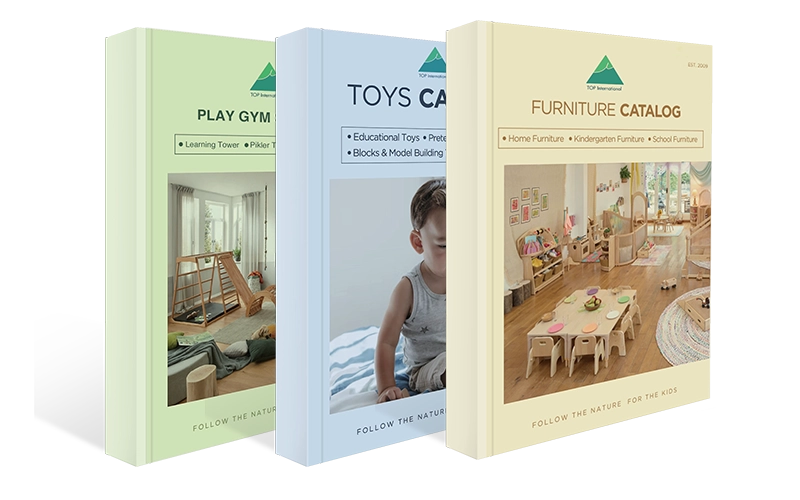Do you find choosing suitable preschool playground equipment a daunting task? Are you looking for how to make preschool play equipment safe and fun? Do you ponder the criteria for selecting a playground apparatus that facilitates and enriches learning?
Choosing the right preschool playground equipment is an opportunity to create an environment where learning and play go hand in hand. Beyond entertainment, quality playgrounds support physical coordination, social development, and early problem-solving skills. They offer spaces where children build confidence, explore their imagination, and engage in meaningful interaction with peers. When thoughtfully selected, play equipment becomes an extension of the educational setting, reinforcing lessons through movement, collaboration, and discovery in a way that indoor classrooms alone cannot achieve.
Let us delve into the nuanced considerations paramount when deciding on the most suitable preschool playground equipment. This article is designed to arm you with the necessary knowledge and insights, empowering you to make well-informed decisions that a playground environment that is safe and conducive to learning is also a source of endless fun and exploration for the children it serves.
Importance of the Right Preschool Playground Equipment
Selecting the appropriate preschool playground equipment is crucial for fostering a good learning environment for kids. This choice goes beyond mere happiness; it significantly influences kids’ physical, social, and cognitive development. The right playground for preschool settings encourages creativity, physical activity, and interactions, laying a foundation for a dynamic and enriching learning experience. This article delves into the significance of choosing equipment that entertains and supports comprehensive development, ensuring children’s beneficial and enjoyable preschool playground experience.

Safety Considerations for Playground Equipment
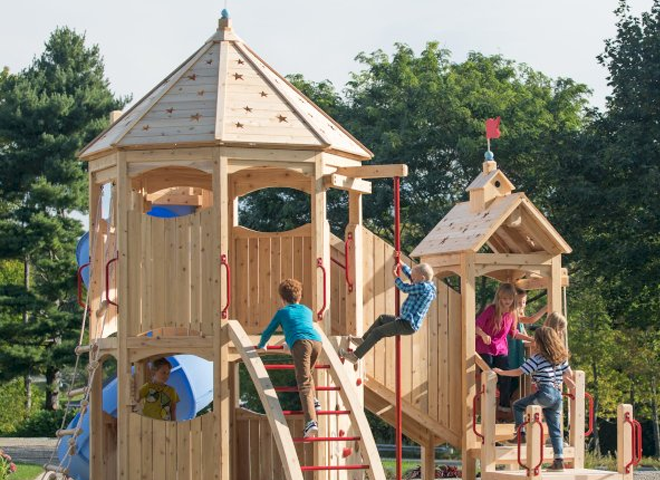
Age and Ability Matching
When selecting playground equipment for 3-5 year olds, it’s crucial to consider their developmental stages, it’s crucial to consider preschool-aged kids’ developmental stages and capabilities. Equipment should cater to their physical size, motor skills, and cognitive abilities. This careful matching ensures the playground is fun, safe, and appropriate for their age group, reducing the risk of accidents and injuries.
Injury Prevention Features
Safety features are paramount in preschool playground equipment. Smooth edges, secure fastenings, and stable structures prevent cuts, falls, and other common playground injuries. Manufacturers should adhere to strict safety standards, using durable materials and construction methods that ensure the equipment can withstand vigorous play without compromising child safety.


Supervision Enhancement
The layout and design of playground equipment should facilitate easy supervision by adults. Clear lines of sight allow caregivers and teachers to continuously monitor children’s play activities, intervening quickly if necessary. This design aspect helps prevent accidents and ensures that children can enjoy playing in a safe and controlled environment.
Enjoyable and Safe Play Sessions
The ultimate goal of preschool playground equipment is to provide an environment where children can safely explore, learn, and have fun. This requires a balance between fun design and stringent safety measures. Creating enjoyable and safe play sessions can make playgrounds a cherished part of children’s childhood.
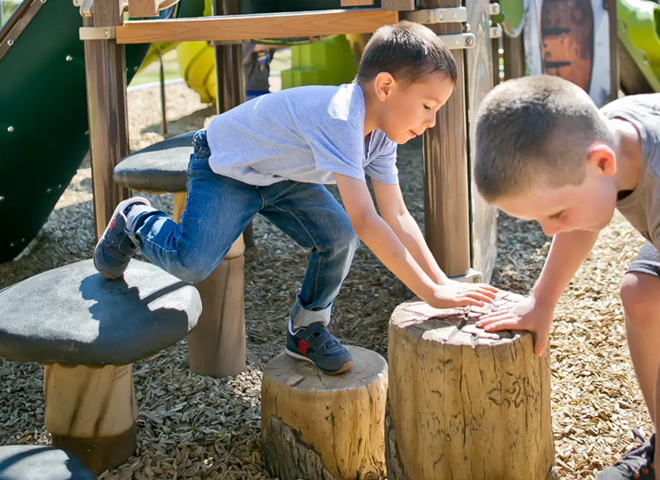
Preschool Playground Equipment Selection Factors
Selecting the right preschool playground equipment involves careful consideration of several vital factors. It’s essential to assess the children’s specific needs and age range using the playground. The equipment should be engaging enough to stimulate physical, cognitive, and social development while being safe and durable. Space availability and the playground’s overall design also play crucial roles in determining which types of equipment are suitable. Additionally, consideration should be given to the equipment’s adaptability to various play styles and its ability to provide inclusive play opportunities for all children.

Preschool Playground Equipment Types

Swings
Swings are a playground staple, aiding in developing balance and coordination.
Slides
Slides encourage physical activity and motor skills, including climbing, balancing, and coordination.

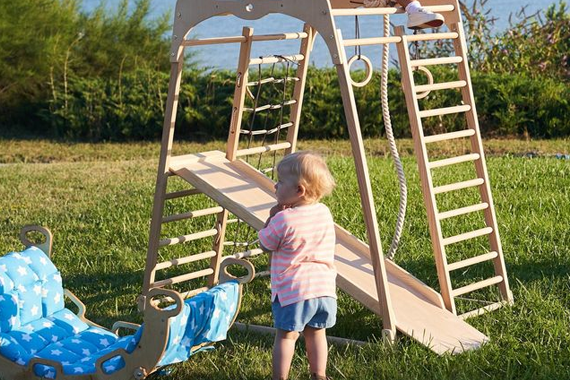
Climbing
Climbing structures promote physical strength, problem-solving skills, and confidence.
Playhouses
Playhouses spark imagination and social play and offer scenarios for role-playing.


Balance
Balance and motion equipment enhance children’s vestibular development and spatial awareness.
Sensory
Sensory play equipment engages the senses and supports cognitive growth.

Preschool playgrounds can offer comprehensive developmental benefits by incorporating various equipment types, ensuring children can access various play experiences.
Safety features to be included
Ensuring the inclusion of safety features in preschool playground equipment is critical for creating a secure play environment. Key safety considerations should include the spacing of elements to prevent overcrowding, mechanisms to secure moving parts safely, and the use of durable and non-toxic materials. Equipment height should be appropriate for the age group, with adequate fall zones and impact-absorbing ground cover where needed. By focusing on these safety aspects, playgrounds can provide a risk-minimized space where children can explore and learn through play.

Inclusion & Accessibility
- Inclusion in Playground Design
Incorporating inclusion in playground design means creating spaces that are welcoming and accessible to kids of all abilities. This involves designing playgrounds with equipment that accommodates a range of physical capabilities, including wheelchair-accessible pathways, ramps, and play structures. Inclusive play areas allow children with diverse needs to play alongside their peers, promoting social interaction and understanding. It’s essential to consider the variety of ways children play and interact with the environment, ensuring that sensory-rich activities that cater to different preferences and developmental needs are available.

- Accessibility Features
Accessibility is critical to an inclusive playground, where every child can navigate and enjoy the space without barriers. This includes features like wide, flat paths for easy movement and tactile elements for children with visual impairments. Play structures should have manageable entry and exit points for children with different mobility levels, and equipment should be designed to accommodate caregivers when necessary. Providing clear signage and creating a layout that is easy to understand can also greatly enhance the playground’s accessibility, making it a safe and enjoyable place for every child.

Preschool Playground Equipment Durability
Durability is a crucial aspect to consider when selecting preschool playground equipment. Choosing pieces built to withstand the test of time and frequent use by energetic children is essential. Durable playground equipment is made from high-quality, robust materials such as galvanized steel, recycled plastic, hardwoods like cedar or redwood, and powder-coated aluminum that resist wear and tear, weather conditions, and constant activity. This ensures the longevity of the playground, offering a safe and reliable environment for children year after year. Additionally, investing in durable equipment reduces the need for frequent replacements, providing a cost-effective solution for preschool settings. Prioritizing durability in playground equipment selection guarantees children a consistent and uninterrupted play experience.
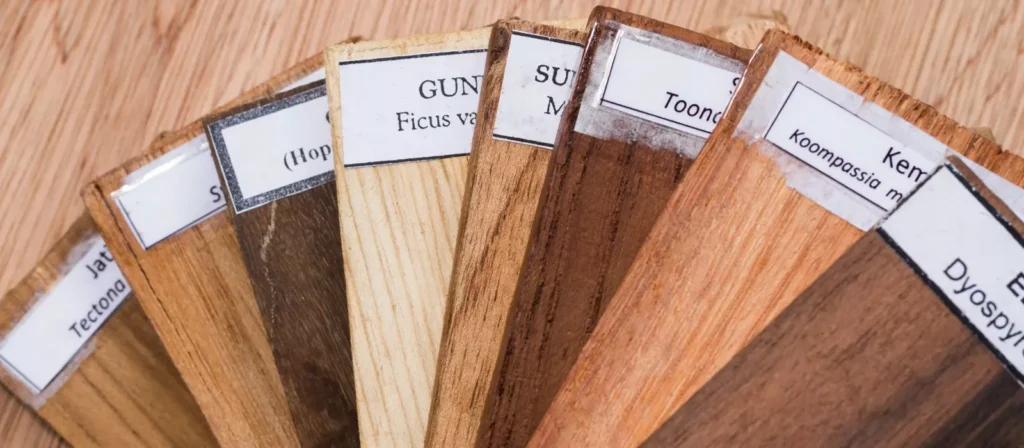
Maintenance & Inspection
1. Importance of Maintenance and Inspection: Regular maintenance and inspection are critical for ensuring the safety and longevity of preschool playground equipment. A systematic approach to checking and servicing the equipment helps identify and address potential hazards like wear, structural weaknesses, or vandalism before they pose risks to kids.
2. Maintenance Procedures and Benefits: This routine should include cleaning, tightening loose components, and replacing worn or damaged parts. Regular inspections ensure that the playground remains a safe, inviting space for kids to explore and learn, while proper maintenance preserves the equipment’s functionality and appearance, extending its usable life.
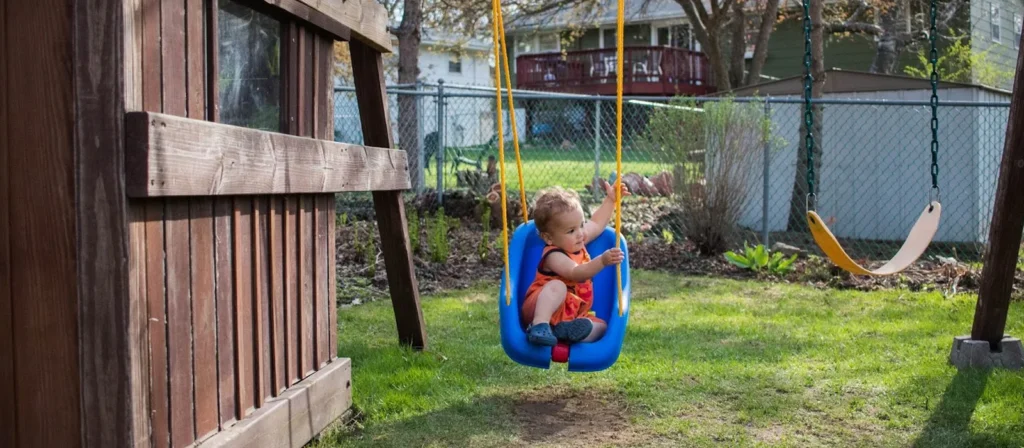
Budgeting Tips for Choosing
When it comes to selecting preschool playground equipment, effective budgeting is critical. It’s essential to plan financially to ensure you can acquire high-quality, durable equipment without overspending. Start by prioritizing essential pieces that offer the most value regarding developmental benefits and usage. Consider the long-term costs of maintenance and potential replacements to ensure sustainability. Exploring various funding sources, such as grants, sponsorships, or community fundraisers, can help offset initial costs. By carefully managing your budget, you can invest in playground equipment that meets your preschool’s needs and enhances the children’s play experience.
Customization Options for Preschool Playground Equipment
Tailoring Playground Designs to Your Needs
Customization of preschool playground equipment allows for creating a play area that perfectly aligns with your educational goals and space requirements. Tailoring designs can help develop a unique playground that stands out and serves the specific needs of your kids and curriculum.

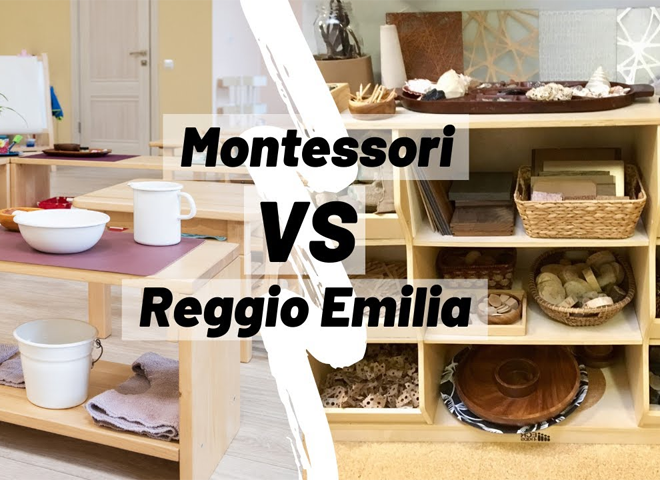
Reflecting on Your Educational Philosophy
Playground equipment can be customized to reflect your preschool’s educational philosophy, whether it’s Montessori, Reggio Emilia, or traditional. This means selecting equipment that encourages the type of learning and play you value.
Maximizing Space and Play Value
Customization also involves considering the available space and how to maximize its use effectively. This includes selecting equipment that fits the designated area, providing various play experiences in a compact layout, and ensuring the playground is accessible and enjoyable for all children.


Eco-Friendly Playground Equipment Options
Choosing eco-friendly playground equipment shows your commitment to sustainability and child health. Look for options made from recycled plastic, FSC-certified wood, and low-VOC coatings. Eco-friendly materials are not only safe but also durable and visually appealing—ideal for environmentally-conscious preschools.
How to Integrate Playground Equipment into Student Learning
Integrating Preschool Playground Equipment into student learning is an effective way to bridge physical play and educational development. When thoughtfully incorporated, playground equipment becomes an extension of the classroom, supporting academic, social, and physical growth through play. Here are five ways to integrate Preschool Playground Equipment into children’s learning experiences:
Provide Opportunities for Independent Exploration
Using Preschool Playground Equipment, such as climbing structures, swings, and playhouses, can encourage children to work together, promoting teamwork and communication skills. By creating spaces that require group interaction, children learn to collaborate and build social bonds during play.
Encourage Social Interaction Through Collaborative Play
Preschool Playground Equipment, such as slides, balance beams, and climbing walls, provides children with opportunities to develop physical coordination and motor skills. These activities also foster an understanding of body movement, space, and balance, helping students stay active while learning through play.

Incorporate Physical Learning with Movement-Based Activities
Activity-focused equipment such as slides, balance beams, and climbing walls helps children develop motor skills and physical coordination. These activities allow kids to learn about their bodies and spatial awareness while staying active and engaged in play.
Foster Creativity and Problem-Solving Skills
Sensory play equipment, like sandboxes or water tables, encourages children to explore, experiment, and solve problems. These activities allow children to express creativity and develop critical thinking as they interact with their environment and materials.
Integrate Academic Concepts into Playground Activities
By incorporating educational elements into the playground, such as numbers on swings or letters on climbing walls, you can promote literacy and numeracy in a fun, physical way. Play equipment becomes an extension of the learning environment where students can engage with academic concepts outside the traditional classroom.

Selecting a Reputable Supplier
Choosing a reputable supplier is essential to acquiring preschool playground equipment that meets safety and durability requirements and aligns with your educational goals. A reliable supplier delivers high-quality products that comply with rigorous safety standards while providing extensive support services, such as expert consultation, tailored customization options, and reliable after-sales service. Additionally, a trustworthy supplier will be open about their manufacturing processes and the materials they use, ensuring they meet or exceed international safety protocols. This transparency is crucial for building a partnership based on trust and ensuring the playground equipment is safe and effective for child development.
At TOP Montessoris, we excel in delivering this level of service and quality. Our extensive experience in the industry allows us to understand the unique needs of preschools and offer customized solutions that align with educational goals and space requirements. Our commitment to excellence ensures that we stand out as a trusted supplier in the market, ready to support your playground project with expert advice and high-quality equipment.

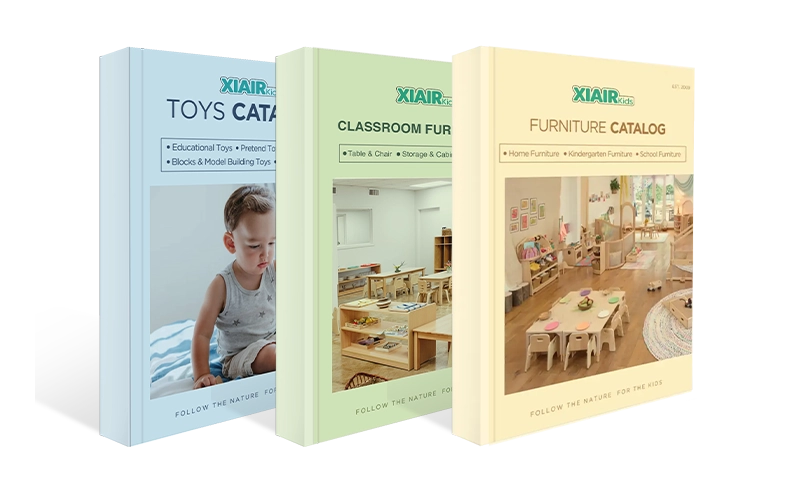
Receive a free catalog and custom layout to help you design your ideal classroom easily.
Our Global Preschool Playground Design Projects: Tailored Solutions for Every Educational Philosophy
Bundles Of Joy Daycare Centre – Creative Outdoor Play for Toddlers

Bundles Of Joy Daycare Centre features a thoughtfully designed outdoor space with our premium Preschool Playground Equipment. The playful layout encourages physical activity and imaginative play, with sturdy wooden structures and a sand pit that foster sensory and motor skill development. The playhouse, designed by us, offers a safe and inviting environment where children can engage in both structured and free play.
Kaizen Early Years – A Harmonious Blend of Nature and Learning

At Kaizen Early Years, our Preschool Playground Equipment plays a vital role in creating a balanced and engaging outdoor space. The playground incorporates our custom-designed climbing walls, slides, and swings, each providing a unique opportunity for children to develop coordination, balance, and social skills. The environment is carefully crafted to encourage exploration and creativity, making it an ideal space for children to grow and learn. All the playground components were designed and built by us to ensure safety, durability, and alignment with educational objectives.
Singapore Nurtured Nest Reggio Preschool – Reggio-Inspired Outdoor Play Environment

The outdoor area at Singapore Nurtured Nest Reggio Preschool exemplifies the Reggio Emilia philosophy, integrating natural elements with high-quality Preschool Playground Equipment. The playground features wooden climbing structures, interactive water and sand tables, and vibrant playhouses, all designed to spark curiosity and collaboration among children. By blending nature with creative play, our playground equipment encourages children to interact with their environment, helping them develop problem-solving skills and foster social interactions. Designed and manufactured by us, this space embodies a perfect fusion of education and play, in line with the Reggio Emilia approach.
Explore More of Our Design Projects
If you’re interested in seeing more of our outdoor playground designs, visit our Project Portfolio to explore additional case studies and discover how we bring unique play environments to life worldwide.
FAQs about Preschool Playground Equipment
1. How big should a preschool playground be?
A preschool playground should provide at least 75–100 square feet per child for safe and active play.
2. How much does a preschool playground cost?
Costs vary widely, but a basic preschool playground can range from $5,000 to $50,000, depending on size, materials, and customization.
3. What is the 20 5 3 rule?
It refers to a physical activity guideline: 20 minutes of outdoor play, 5 days a week, for 3 months to develop consistent healthy habits.
4. What does Montessori say about outdoor play?
Montessori emphasizes free, unstructured outdoor play as essential for physical development, independence, and connection with nature.
5. How long should a 4-year-old play outside?
A 4-year-old should spend at least 1–2 hours outdoors daily, with a mix of active and quiet play.
6. What’s the ideal size of a preschool playground?
An ideal preschool playground should accommodate group size and age range, typically 1,500–2,500 square feet for 20–25 children.
7. Is eco-friendly playground equipment safe and durable?
Yes. Eco-friendly playground equipment made from recycled or sustainable materials meets modern safety standards and offers long-lasting use.
8. How do I design a preschool playground layout for 3-5 year olds?
Start by zoning areas for climbing, running, sensory play, and quiet rest, and ensure clear supervision lines and age-appropriate equipment.
Conclusion: Crafting a fun, engaging outdoor play space for kids
Creating a purposeful outdoor environment begins with thoughtful decisions—selecting preschool playground equipment that not only engages but also nurtures. The ideal playground balances movement and mindfulness, independence and interaction, risk and safety. It encourages every child, regardless of ability or age, to explore at their own pace while benefiting from a setting tailored to support early developmental milestones.
To achieve this, educators and decision-makers must rely on partners who understand the intricacies of early learning spaces. From materials to layout, the details matter. At TOP Montessoris, our expertise in designing and manufacturing high-quality daycare and preschool playground equipment ensures that each play environment is not only durable and safe but also aligned with educational principles that foster lifelong curiosity. With the right approach and the right support, your playground becomes more than a play space—it becomes a foundation for learning.








